If Betelgeuse explodes, it’s going to be a sight to behold. It would be bright enough to be visible in the day, and as bright as the half-moon in the night, and capable of casting shadows in the night. [1] And if we’re lucky, we could see it happen any time. It could happen today. Or Tomorrow. Or Next month. Or Next year. Or Next decade. Or Next Century. Or Next Millenia. All of those are equally possible.
We can predict if a star will go Supernova, but our measurements in Astronomy come with a huge error range. And the error Betelgeuse’s supernova prediction is at a massive 100,000 years. And beyond that, statistically, Supernovae are rare. In any given galaxy of 100 billion stars, we would be able to find about two supernovae per century. It would be extremely hard to find one even if our error in calculations weren’t so high. Most supernovae we record are detected after they happen. We do not have high-quality observations of the early stages of a supernova, because they’re so hard to predict.
But then, in May 2015, a group of scientists predicted that we would see a supernova in the spiral galaxy, SP1149, in a couple of months. To hear this out of context, that would sound like a really bold prediction. When we’re unable to make an accurate prediction of a supernova down to the century, how could these people claim to predict a supernova down to the month?
But when this group of scientists asked for time on the Hubble telescope to observe this galaxy for any supernovae…. their request was granted. Clearly, their request wasn’t baseless. Otherwise, a telescope in the sky wouldn’t be spending valuable time trying to investigate a “dumb prediction” like our intuition might suggest.
To understand why this seemingly absurd request from some of the world’s best researchers was entertained by the Hubble Telescope, we need to look at the work of Einstein, and his theory of relativity.
Einstein Proposed that Gravity is a bend in the Space-Time warp. So anything traveling through a gravitational field would not only traverse a longer distance but also experience time slower. Everyone’s heard of the Twin paradox. A twin going off into Space would age differently than a twin who’s on earth.
But what if we have a Photon that’s traveling, instead of a twin? Two parallel beams of light that leave at the same time, but one goes through a gravitational field. Well, the one that’s not interacting with a Gravitational Field would reach you quicker than the one that’s encountered a gravitational field. There’s going to be a delay in between both the beams reaching the detector.
Let’s put this to the test. The Venus can be in either of two spots in its orbit around the sun, with reference to the earth.
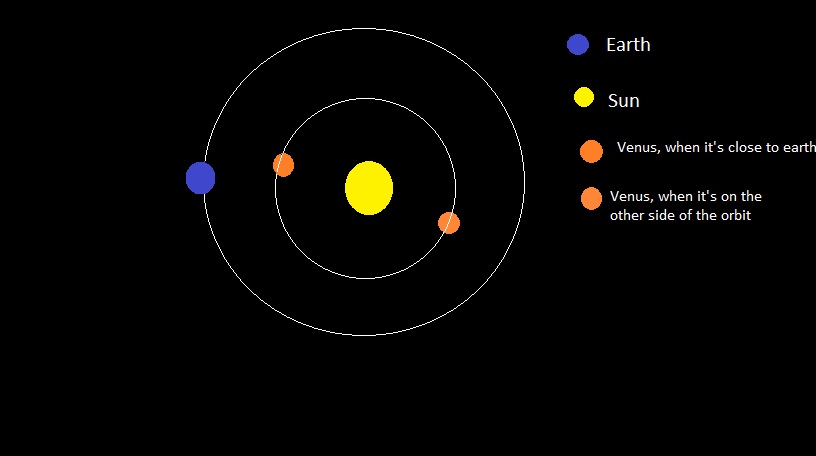
So, we send a radio pulse to Venus and measure the time it goes to Venus and comes back (basic echolocation). We know the radius of Earth’s and Venus’s orbits, and we know the Speed of Light. Those are all the data we need to calculate the time the echo would take to return to earth. But, in the second case, when the sun is in between earth and Venus, we would theoretically measure a time delay of 200 milliseconds longer than expected, due to the gravitational effect of the sun. Irwin Shapiro predicted this in his 1964 article “Fourth Test of General Relativity” [2]
In 1966 and 1967, the MIT Haystack observatory conducted a few tests, and the results matched the predictions. [3]
This time delay because of light traveling through a gravitational field has been named Shapiro Time Delay, after the scientist who first discovered it.
However, this peculiar behavior is not the only oddity of the General Theory of Relativity that leads to the prediction of the supernova.
A little-known fact about light is that it takes a geodesic path, not a straight path. This is a huge part of why the General Theory of Relativity works.
What is a geodesic path? If you were on the surface of this object, traveling the geodesic path would seem like you were walking a straight line, but you’d be walking on a curve. Depending on the three-dimensional object and various other factors, this geodesic path will change. For a sphere, the Longitude lines may be considered geodesic paths. When you’re following them, you don’t have to turn at any point. Geodesy is a complex field in Three Dimensional Geometry, and I am not doing it justice with my explanation. To Understand better, I recommend Vsause’s video, Which way is down? [4]
The Longitude lines, even though they may be parallel, do end up meeting at the poles. Similarly, when light travels in a gravitational field, it could still maintain its property of rectilinear propagation and travel a geodesic path, and still, we could see parallel rays of the light meeting as they emerge. This means an object with sufficient gravity can bend light, and act as a lens.
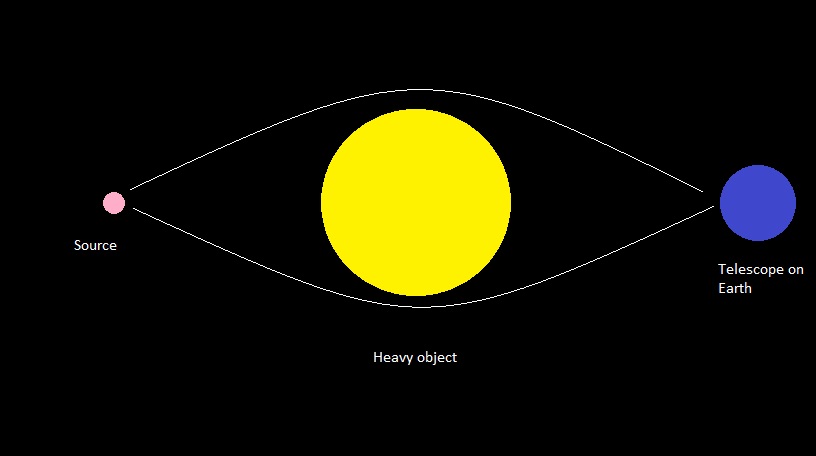
When things line up properly, we can see some interesting patterns due to this Gravitational Lensing.
Suppose a spherical source is hiding behind a spherical body(lens), then, we get what’s called an Einstein Ring.
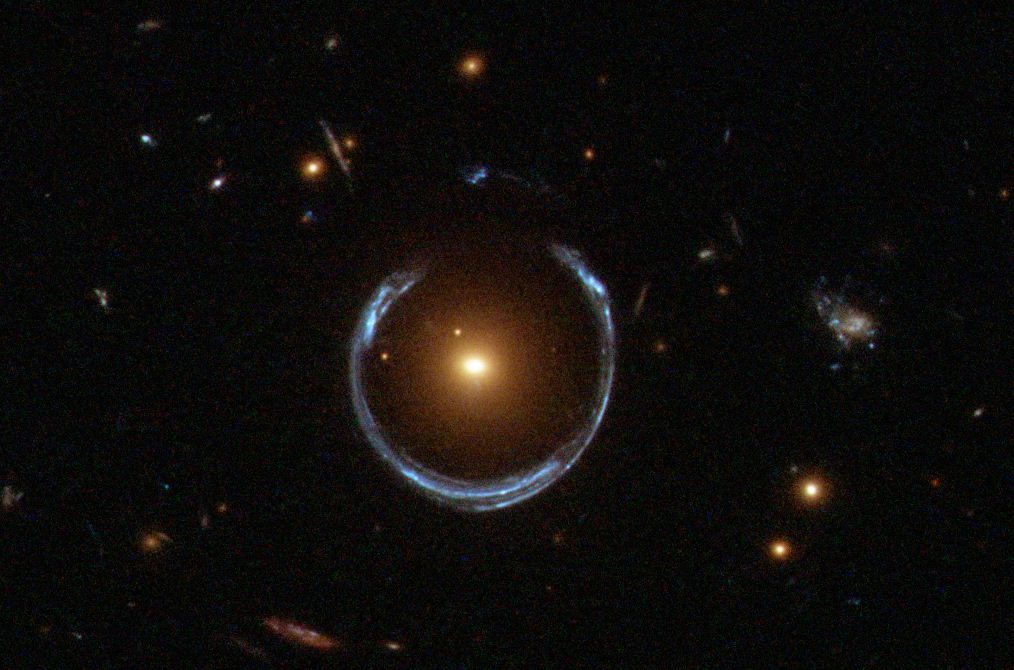

When the spherical lens is slightly off-axis, we get a slightly distorted ring. Like a Semi-Circle. One of the best examples of this is the smiley face we see in the sky. (Yes, this is a real image of SDSS J1038+4849. Not edited.)
Finally, if the lens object is slightly asymmetrical, (like an ellipsoid), we see the formation of a structure called an Einstein Cross. Basically, the same thing appears in 4 places around the lens object. (Lensed Quasar HE0435-1223) In the middle of this image, you can see
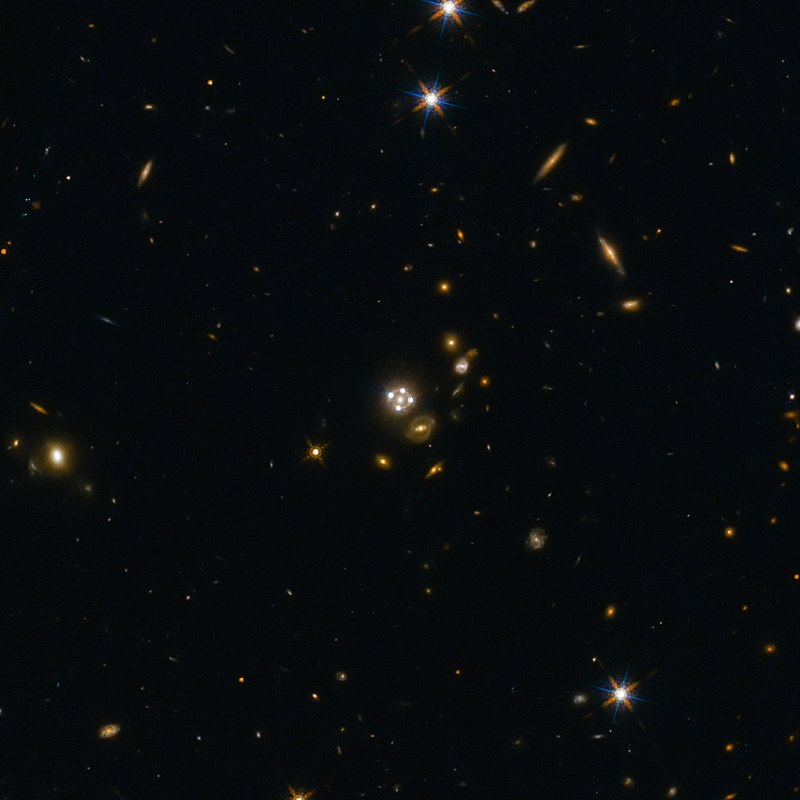
Okay, so all that made sense?
Okay, now we get to Inception in Interstellar. These are the fun details behind how they predicted the supernova, with such accuracy.
About a year and a half before these predictions were made, Hubble took this image, of MACS J1149.5+2233 galaxy cluster. [5]
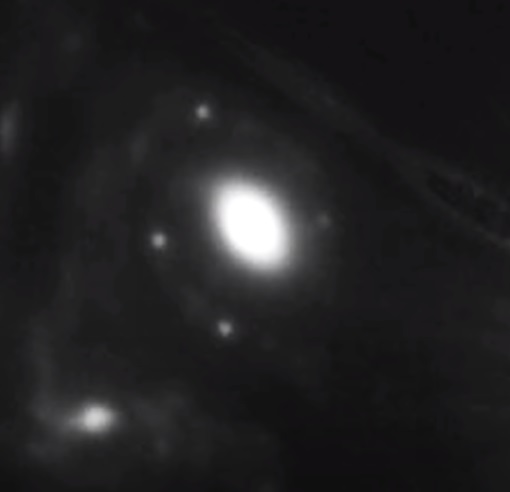
Those 4 dots around the galaxy you see?
Those are the same Supernova, showing up as an Einstein Cross.
Supernovae have a distinct light curve, which changes over time. And these four afterimages of the supernova were at different points in their light curve. With what we know about the Shapiro Time Delay, we can then calculate its original position.
But this was an interesting case, as the galaxy itself was showing up multiple times due to lensing.
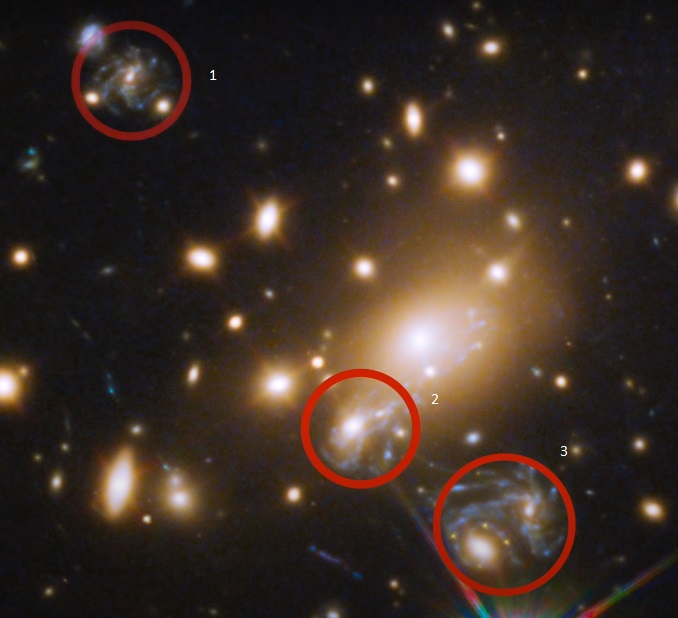
Now, the original image was taken from the Third afterimage of the galaxy. Technically, if the supernova showed up at one, then it should be visible in the other two as well.
Now, running a few calculations, they could predict when the supernova would show up on the other two. On the Afterimage 1, it would have shown up Twenty years earlier. Since there weren’t many images of this region of the sky from back then, there was no way to validate these claims.
But we do have the afterimage 2 to check with. And running the calculations, they could predict that the supernova would show up in November 2015.
So Hubble took three images. Once in October:

Once in November:
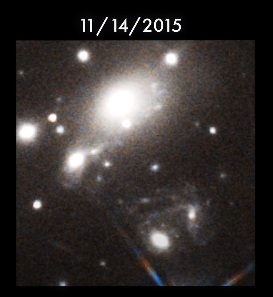
And once in December:
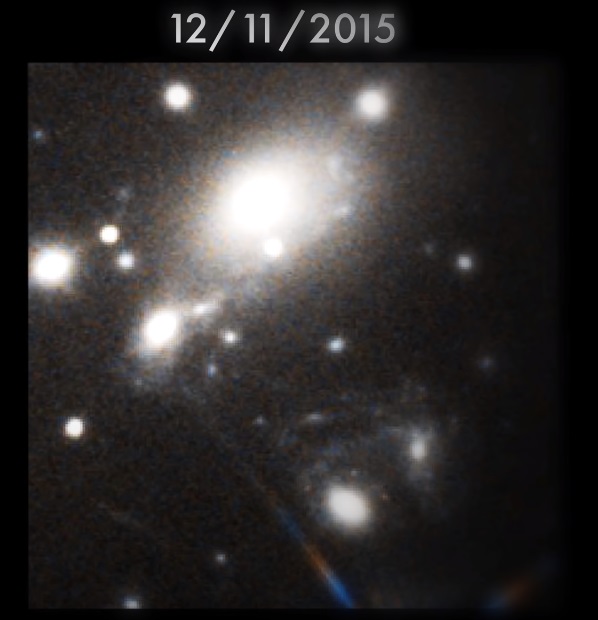
Did you find it? Let’s Zoom in and check again.
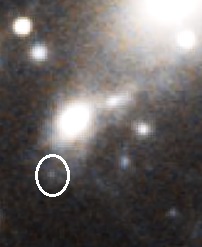
There’s the Supernova. Right where they predicted it to be, and right when they predicted it to show up.
And this is how Patrick L Kelly et al Predicted The Deja-Vu Supernova, Refsdal. They even call it as such in their paper, where they published these findings. [6]
Deja-Vu and precognition might be tales of myth, astrology, and legend. But with science, sometimes even the most unlikely things can have an explanation.
[1] When Betelgeuse goes supernova, what will it look like from Earth? | Astronomy.com
[2] Irwin I. Shapiro (1964). “Fourth Test of General Relativity”. Physical Review Letters. 13 (26): 789–791. Bibcode:1964PhRvL..13..789S. doi:10.1103/PhysRevLett.13.789.
[3] Irwin I. Shapiro; Gordon H. Pettengill; Michael E. Ash; Melvin L. Stone; et al. (1968). “Fourth Test of General Relativity: Preliminary Results”. Physical Review Letters. 20 (22): 1265–1269. Bibcode:1968PhRvL..20.1265S. doi:10.1103/PhysRevLett.20.1265.
[4] https://youtu.be/Xc4xYacTu-E
[6] [1512.04654] Deja Vu All Over Again: The Reappearance of Supernova Refsdal (arxiv.org)

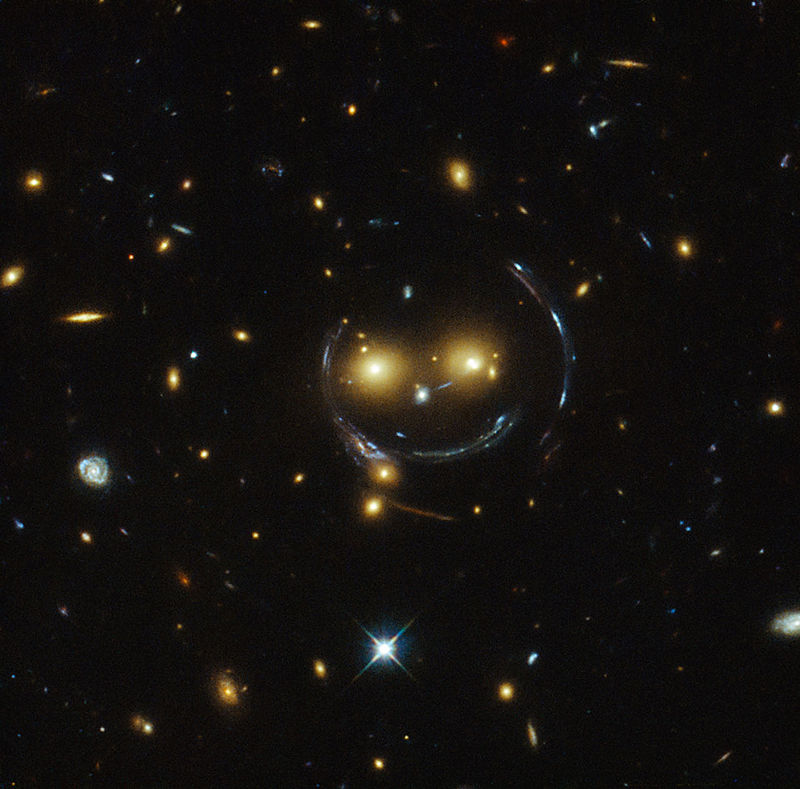


Leave a Reply